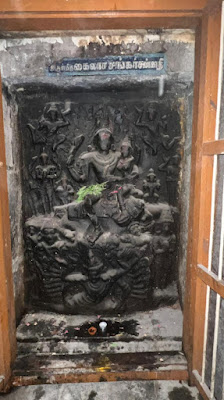Ravana lifting Kailasa - Tirunelveli Nellaiyappar Temple

You may find yourself as a casual observer, perhaps not inclined to delve into the intricacies of sculptures. Alternatively, you might be accompanied by your playful child, whose attention might not be drawn to the temple's details. However, in both cases, what I'm about to describe demands attention. It's a spectacle of magnificence, an embodiment of grandeur that cannot be overlooked. Resuming my narrative within the Kantimati Sameta Nellaiyappar temple in Tirunelveli, I now transition from the southern second prakara to the western second prakara, encircling the revered Nellaiyappar sanctum. Directing my gaze to the southwest, a location known as Kanni Moolai, I anticipate encountering the familiar Kanni Moola Ganapati shrine. Yet, this time, the norm is broken. What captures my attention is a striking statue of Ravana. Ravana, depicted here, commands attention with his imposing presence – large, substantial, and profound. His figure embodies both ferocity and complexity...
.JPG)


.JPG)


%20-%20Copy.JPG)
.JPG)
.jpg)
.JPG)
.jpg)
.JPG)
.JPG)
.jpg)